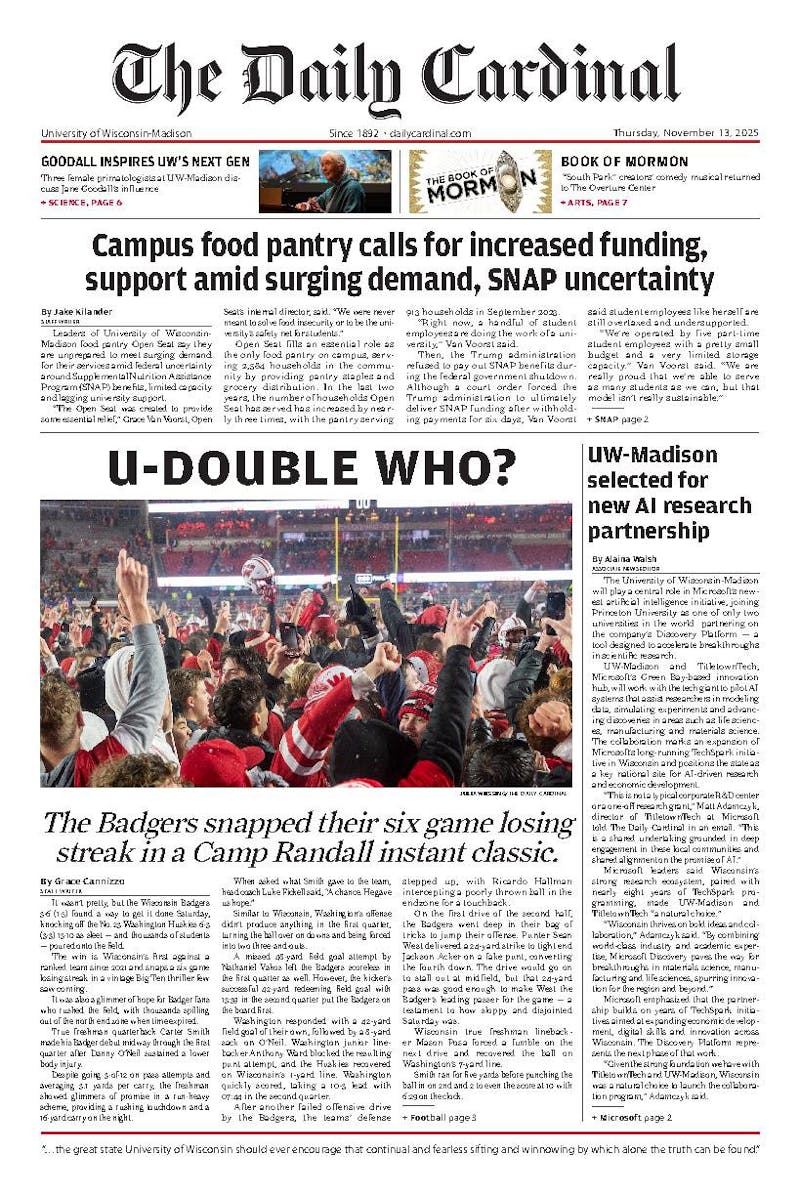With the results of Plan 2008 still undetermined, it is impossible to say that the UW System will call it a success.
It is likely, however, that UW-Madison administrators will highlight their progress from 10 years ago, when minorities only made up 8.9 percent of undergrads while in the 2006-'07 freshmen class, 14.2 percent of students enrolled were students of color.""
Administrators will label this a victory for diversity. And they would be right - if the success of diversity could be measured in numbers.
The significance of being a diverse campus, however, is not shown in percentages and statistics, but in a shared student experience.
Although the university increased the number of students of different ethnicities, races, sexual orientation and religions on campus, this is just the first step of many the university should be taking. Without further action, UW-Madison has only increased the appearance of diversity.
For UW-Madison to call itself a diverse campus community, students of all backgrounds have to mix. Without a push to branch out, incoming students often turn to what is familiar to them. This is not helped when UW-Madison hosts special SOARs for people of different races or advertises an event as ""diverse."" These actions just call attention to differences and emphasize the unfamiliar.
For diversity to have an impact on the student body as a whole, students need come together through shared experiences. To put it simply, black kids need to meet Chinese kids, Jews need to meet Catholics, gay kids need to meet straight kids. And they need to meet in an environment and at an event that does not immediately call attention to the differences between them.
In terms of hosting these types of events, UW-Madison is admittedly disadvantaged due to its size and the number of activities students have access to in the city. However, these disadvantages are offset by the university's access to faculty members and students that are among the best thinkers in the country who can undoubtedly think of a few ways to bring an eclectic group of students together.
No matter how UW-Madison does it, the university needs to focus on what happens after the diversity percents are calculated and the race statistics are charted.
It is not enough for a diverse group of students to be at UW-Madison - they have to interact, and it is the university's job to make sure that those students do.





